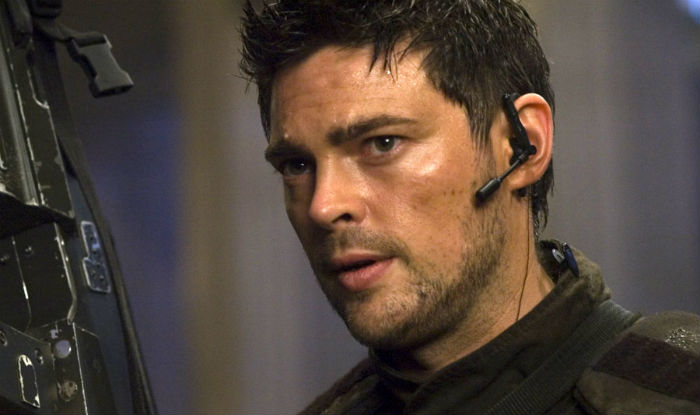Karl Urban has established himself as one of the most versatile and dynamic actors in the entertainment industry. With a career that spans over two decades, Urban’s journey from his beginnings in New Zealand to his starring role in the hit Netflix series “The Boys” is a testament to his talent, determination, and adaptability.
Early Life and Beginnings in New Zealand
Born on June 7, 1972, in Wellington, New Zealand, Karl-Heinz Urban grew up in a household that nurtured both creativity and practicality. His mother worked in the film industry, which exposed him to the world of cinema from a young age, while his father ran a leather goods business, emphasizing hard work and discipline. Urban’s early fascination with movies and storytelling was fueled by these influences, and by the time he was a teenager, he knew he wanted to pursue a career in acting.
Urban’s first acting experience came at the age of eight, when he appeared in an episode of the New Zealand television series “Pioneer Woman.” Despite this early start, he didn’t actively pursue acting until after he completed his schooling. Instead of attending university, Urban chose to dive directly into the New Zealand film and television industry, a decision that set the stage for his career.
Early Career Struggles and Breakthroughs
The early stages of Urban’s career were marked by a series of small roles in New Zealand television shows and films. He appeared in several popular series, including “Shortland Street,” where he played the character of paramedic Jamie Forrest. While these roles provided valuable experience, they also came with the challenges of limited exposure and the need to constantly prove himself in a competitive industry.
Urban’s breakthrough came in the late 1990s when he was cast in the internationally recognized television series “Hercules: The Legendary Journeys” and its spinoff “Xena: Warrior Princess.” He portrayed multiple characters, most notably the warrior Cupid and the Roman leader Julius Caesar. These roles allowed Urban to showcase his versatility and range, earning him attention both in New Zealand and abroad.
Transition to Hollywood
Karl Urban’s work on “Xena: Warrior Princess” opened doors to more significant opportunities, and by the early 2000s, he began to make the transition to Hollywood. His first major international role was in the horror film “Ghost Ship” (2002), where he played Munder, a member of a salvage crew who encounters a haunted ship. Although the film received mixed reviews, it marked Urban’s entry into Hollywood and set the stage for more prominent roles.
Urban’s big break in Hollywood came with his casting as Éomer in Peter Jackson’s “The Lord of the Rings” trilogy (2002-2003). As a key character in the epic fantasy series, Urban’s portrayal of the loyal and courageous warrior from Rohan earned him widespread acclaim. His performance in the trilogy not only introduced him to a global audience but also solidified his place as a rising star in the film industry.
Continued Success and Iconic Roles
Following his success in “The Lord of the Rings,” Karl Urban continued to build his career with a series of high-profile roles. In 2004, he starred as Dr. Leonard “Bones” McCoy in J.J. Abrams’ “Star Trek” reboot, a role that would become one of his most iconic. Urban’s portrayal of the gruff but compassionate Starfleet doctor paid homage to the original character while also bringing a fresh energy to the role. His work in the “Star Trek” franchise further established him as a leading man in Hollywood.
Urban’s versatility was on full display in his diverse filmography during this period. He starred as the titular character in “Dredd” (2012), a gritty and action-packed adaptation of the comic book series “Judge Dredd.” Despite its modest box office performance, the film gained a cult following, and Urban’s portrayal of the no-nonsense law enforcer was widely praised.
He also took on roles in films like “Red” (2010), alongside Bruce Willis, and “Riddick” (2013), where he reprised his role as Vaako from “The Chronicles of Riddick” (2004). These roles showcased Urban’s ability to seamlessly transition between different genres, from science fiction to action to thriller.
Starring in Netflix’s ‘The Boys’
Karl Urban’s career reached new heights with his starring role in the Netflix series “The Boys” (2019-present), based on the comic book of the same name by Garth Ennis and Darick Robertson. Urban plays Billy Butcher, a grizzled, vengeance-driven anti-hero who leads a group of vigilantes against corrupt superheroes.
Urban’s portrayal of Billy Butcher has been widely acclaimed for its intensity, complexity, and dark humor. The character’s rough exterior, combined with moments of vulnerability and moral ambiguity, has resonated with audiences and critics alike. “The Boys” has become a cultural phenomenon, and Urban’s performance is a key factor in the show’s success. The role has also introduced him to a new generation of fans and solidified his status as one of the most compelling actors on television.
A Legacy of Versatility and Resilience
Karl Urban’s journey from New Zealand to Hollywood, and his current success with “The Boys,” is a testament to his resilience, adaptability, and talent. Over the years, he has proven himself to be an actor capable of taking on a wide range of roles, from epic fantasy heroes to complex, morally ambiguous characters.
As he continues to build on his already impressive career, Urban remains a beloved figure in the entertainment industry. His ability to bring depth and authenticity to every role he plays ensures that he will continue to be a significant presence in both film and television for years to come.
Karl Urban’s story is one of perseverance, dedication, and the relentless pursuit of excellence. From his early days in New Zealand to his current role as Billy Butcher in “The Boys,” Urban’s journey is a shining example of what can be achieved through talent and hard work.
